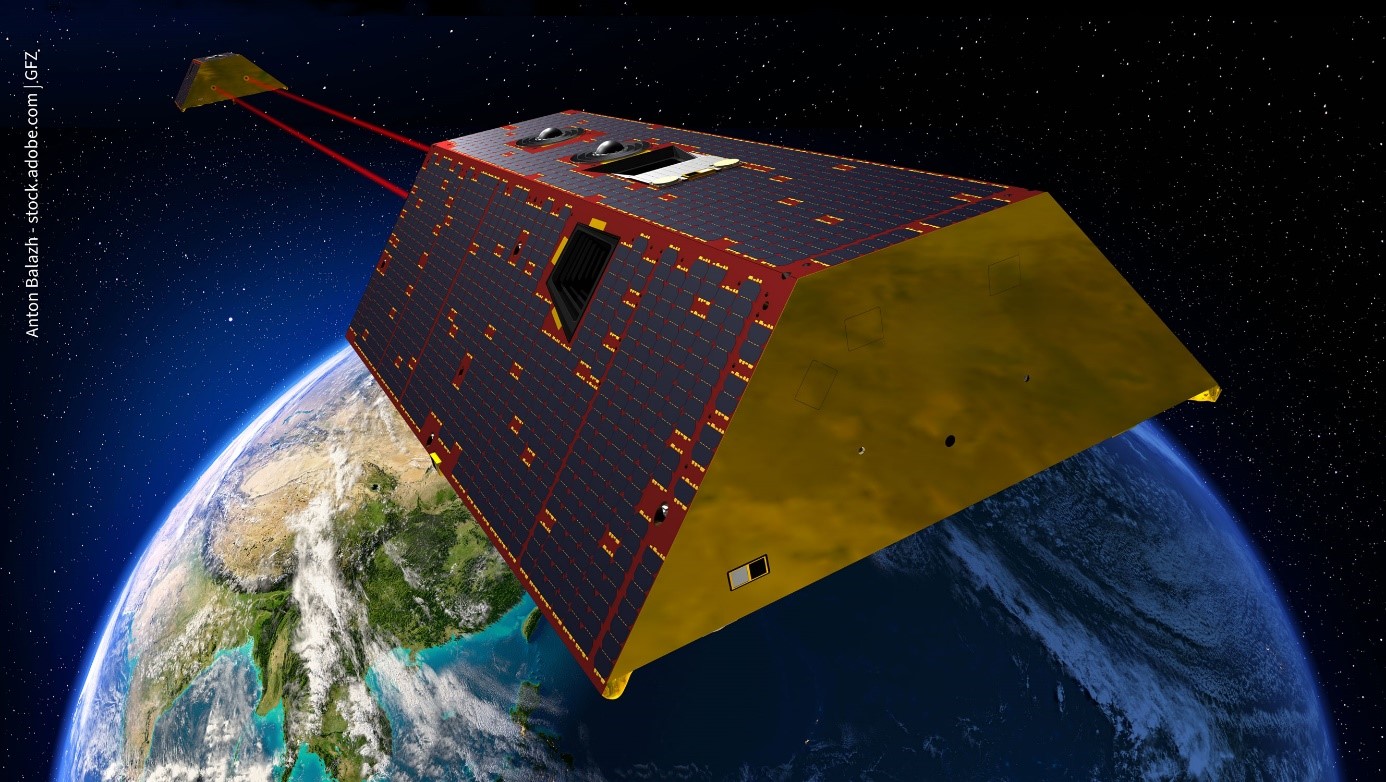GRACE-C - Gravity Recovery and Climate Experiment Continuation Mission
Contact:
Web:
Infrastructure belongs to:
The primary objective of the GRACE-C Mission is, as for GRACE and GRACE-FO, to obtain precise global and high-resolution models for both the static and the time variable components of the Earth's gravity field. As in the original GRACE missions, this goal is achieved by making accurate measurements of the inter-satellite range between two co-planar, low altitude and polar orbiting twin satellites using Laser Ranging Interferometer (LRI) measurements instead of K/Ka band microwave signals. The LRI was successfully tested as a technology demonstrator on GRACE-FO. Additionally, each satellite carries a geodetic quality Global Navigation Satellite System (GNSS) receiver for precise positioning and time-tagging, a Laser Retroreflector (LRR) for independent orbit control from ground, and a high accuracy accelerometer to precisely measure the non-gravitational forces acting on the satellite.
The GRACE-C project is managed by NASA in the US. The Jet Propulsion Laboratory (JPL) was given responsibility by NASA's Earth Science Directorate for the realization of the GRACE-C project on the US side, which includes the building of the two GRACE-C satellites (again at Airbus Defense & Space in Germany), contributions to the LRI, the provision of two accelerometers and parts of the Science Data System (SDS).
The GRACE-C mission also has significant German contributions, led by the DLR (German Aerospace Center) and jointly funded by the Federal Ministry of Education and Research (BMBF) and the Federal Ministry of Economics and Climate Protection (BMWK). Additional significant funding for the German contributions comes from the GFZ and the Max Planck Society for the Advancement of Science. The US-German cooperation is defined in an Implementation Agreement between NASA and DLR, the respective roles and responsibilities are described in a Cooperative Project Plan. Accordingly, the GFZ is responsible for (1) the evaluation and distribution of scientific data via the GFZ Information System and Data Center (ISDC) within a US-German Science Data System (SDS); (2) the provision of laser retroreflectors (LRR) for both satellites; (3) the mission operation after launch (with US support) and (4) the leadership of the European Science Team.
GRACE-C shall be launched in December 2028 from Vandenberg Airforce Base in California on a Space-X/Falcon-9. The GRACE-FO Mission Operations System (MOS) and Ground Data System (GDS) are funded, as for GRACE-FO, by GFZ (for the first 5 years) and sub-contracted to DLR’s German Space Operation Center (GSOC) in Oberpfaffenhofen. GFZ provides again the Operations Mission Manager (OMM) and the Ny-Ålesund/Spitzbergen (NYA) ground station complex.
Categories
Disciplinary Keywords
Instrumentation
The GRACE-FO Science Instrument System (SIS) includes all elements of the Laser Ranging Interferometer (LRI) system, the GNSS receivers required for orbit determination and time keeping, and associated sensors, such as the star tracker assembly (STR) and the accelerometers (ACC). These elements are in general identical to GRACE-FO, but based on up-to-date hardware and software. Additionally, GFZ provides Laser Retroreflectors (LRR) for both satellites for independent orbit determination control. The SIS also coordinates the integration activities of all sensors, assuring their compatibility with each other and the satellite. In the following, the different SIS components are shortly summarized.
Instruments
-
GNSS Receiver Assembly
The GNSS Receiver Assembly tracks the GNSS satellite ranging signals for satellite position and clock determination for on-board operations and precise absolute orbit determination and time-tagging of science data.
-
Laser Ranging Interferometer (LRI)
The LRI is a joint US/German instrument and was successfully operated as a technology demonstration on GRACE-FO. On GRACE-C various redundancy will be added and a scale factor unit will be implemented as a new component.
-
Laser Retro-Reflector (LRR)
The passive Laser Retroreflector (LRR) will be contributed by GFZ and provides distance measurements of the GRACE-C satellites relative to the terrestrial ILRS tracking network. For that, four corner cubes are mounted on the nadir surface of the satellite, which reflect laser-ranging signals transmitted from the ground. The operating characteristics for the LRR are determined by the ILRS ground segment.
-
SuperSTAR Accelerometer (ACC)
The SuperSTAR Accelerometer measures the non-gravitational accelerations acting on the satellite. These accelerations include air drag, solar radiation pressure, Earth radiation forces, thermal forces and forces created by operating the attitude control activators. The measurements are used to model the evolution of the satellite orbits due to the non-gravitational forces, so that the contributions to the inter-satellite range changes due to purely gravitational effects can be correctly discriminated. Accelerometer measurements may also be used, in conjunction with other data and models, to determine upper atmospheric density variations.
Link
Project Webpage
Relationships
- is related to
- AOD1B - GRACE Atmosphere and Ocean De-Aliasing Level 1B Product
- ESA ESM - the updated ESA Earth System Model for Gravity Mission Simulation Studies
- GFZ Data Services
- GRACE-FO - Gravity Recovery and Climate Experiment-Follow-On Mission
- Globalwaterstorage Information Portal
- GravIS - Gravity Information Service
- ISDC - Information System and Data Center
- Magnetic Satellite Data Products
- Satellite Receiving Station Ny-Ålesund (Spitsbergen)
